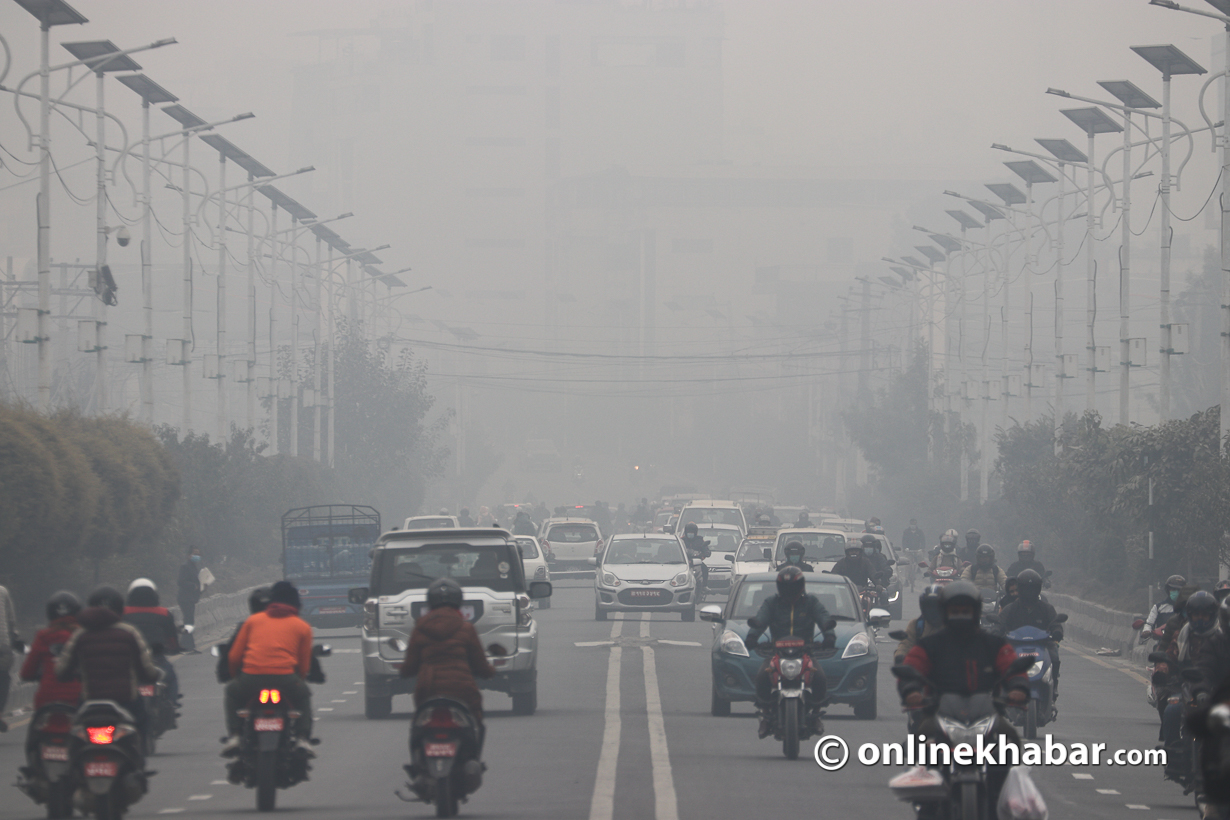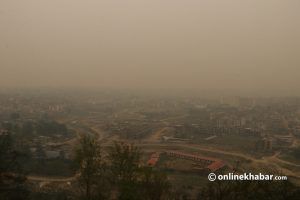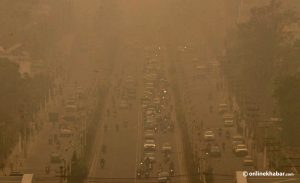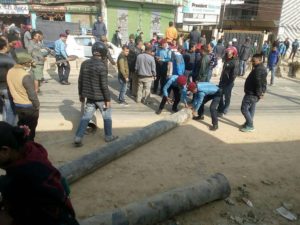In February 2017, Kathmandu was ranked seventh most-polluted city in the world by Numbeo with a mark of 103.5 on the air quality index. On January 5 this year, Kathmandu was ranked the worst with 450 in the index. This raised concerns at all levels as people complained of eye-burns and difficulty in breathing. But, has anything been done to mitigate the problem?
The silent killer
The Department of Environment issued the Kathmandu Valley Air Quality Management Action Plan-2020 on March 6, 2020, following the approval from the Council of Ministers on February 24, 2020. In the plan, it was clearly stated that the government can declare a health emergency if the AQI exceeds 300.
Data regarding air pollution were first collected in the 1990s by Environment and Public Health Organisation (ENPHO) and again during 2002-2007. Recently, regular data collection on air pollution is being conducted in six spots around Kathmandu.
Environmentalist Bhusan Tuladhar says, “If we look at average data from the past years, an immediate response is important. We need a year-long response because the danger is imminent.”
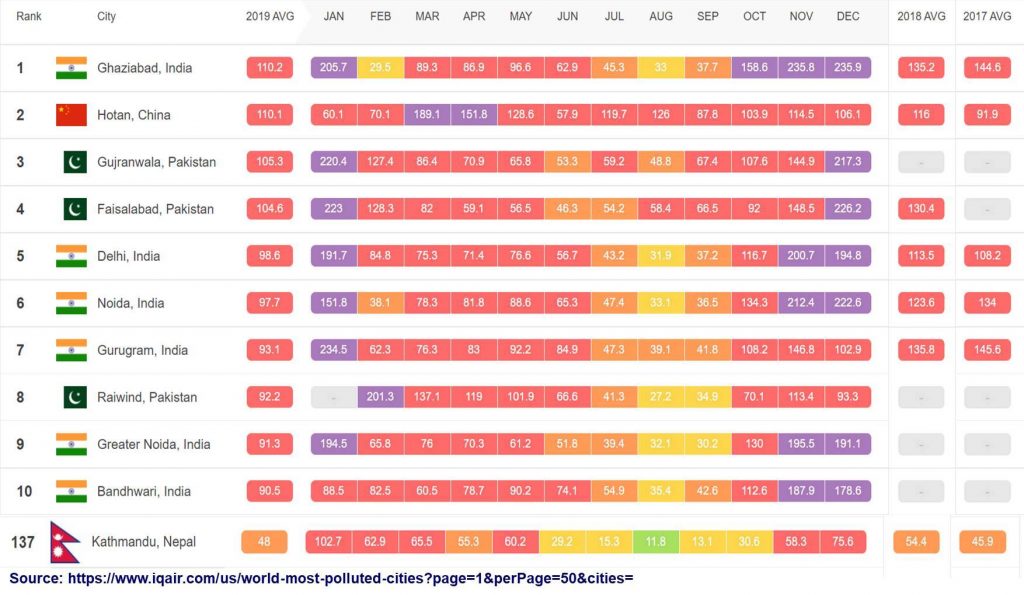
If one looks at live updates from Drishti, a project advocating against toxic air pollution levels in Kathmandu, the average AQI of the city is no less than 150 on an average working day, which is above the very-hazardous level. “All residents of the capital are living in the constant threat of being choked and/or facing long-term breathing problems,” warns Shail Shrestha, a programme director of Sustainability School Programme in Digo Bikas Institute.
Tuladhar backs Shrestha stating that air pollution is indeed a silent killer. “Data from the State of Global Air state that over 42,000 people die of pollution every year. But, many deaths are categorised as deaths from lungs or heart diseases and not air pollution.”
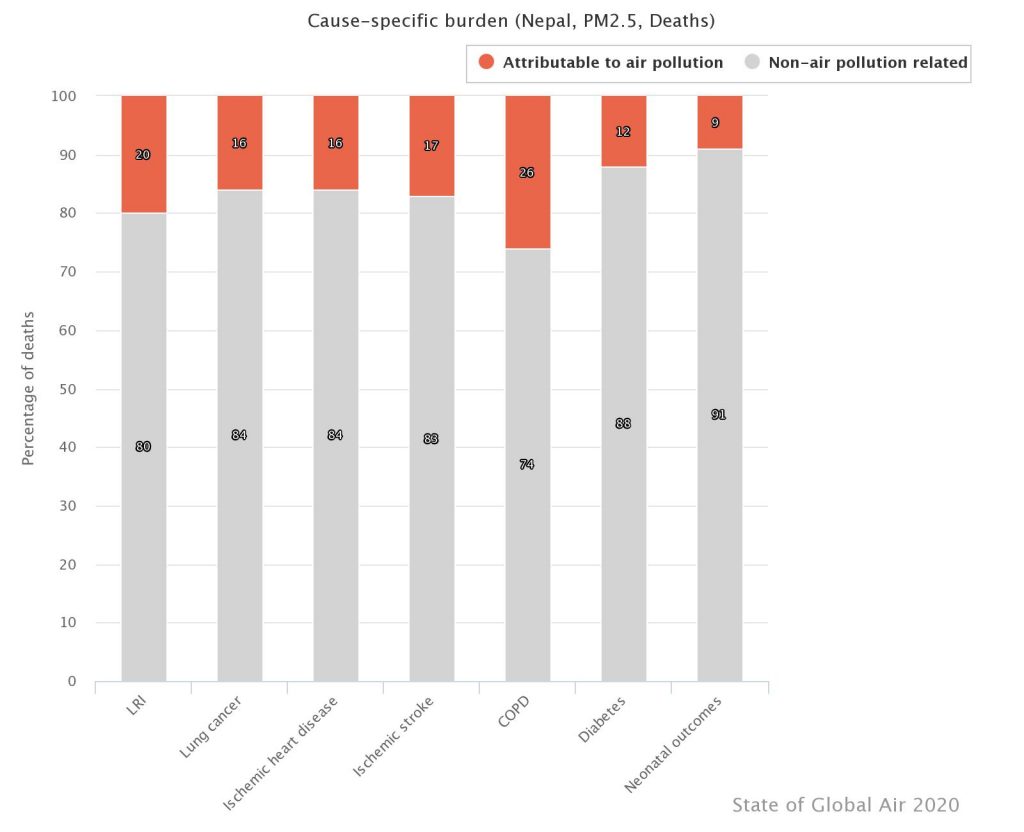
“Air pollution is a constant problem, but it does not get acknowledged because we cannot see it. On January 5, it became a problem, because people were complaining of eye burns and low visibility,” he adds.
Shrestha stresses Kathmandu needs to be more cautious and adopt better health measures. “We are living in a valley, so geographically, we are more at risk as the pollution gets trapped within. On top of that, when winter comes, the temperature drop in the air further traps the pollution closer to the ground level. So, as a result, it becomes like a lid and we are trapped inside it.”
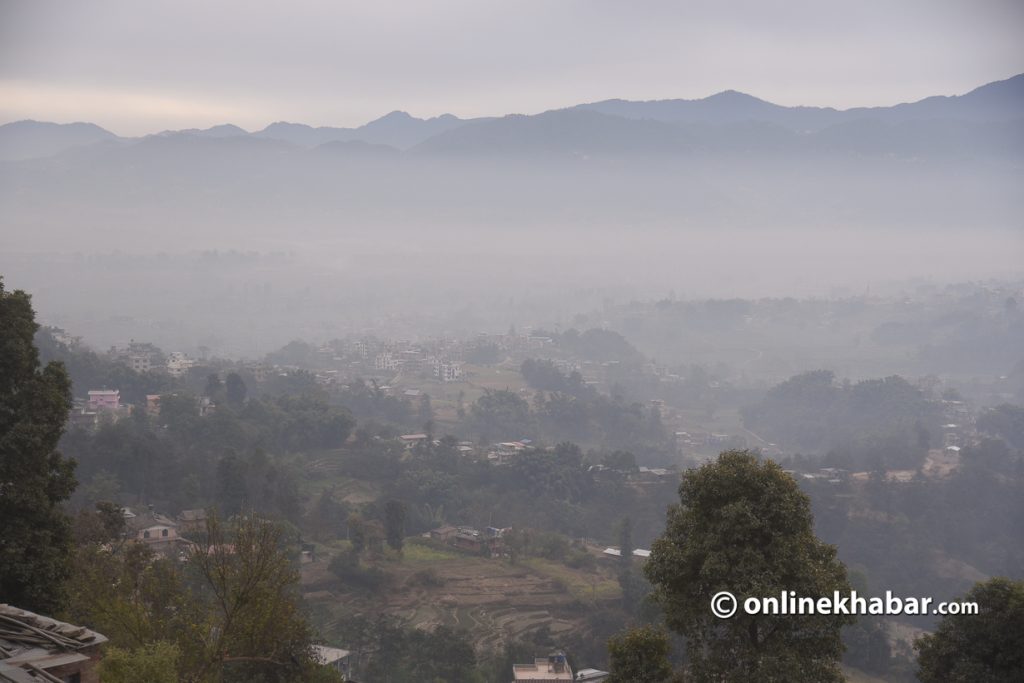
Inaction intensifies problem
The major causes of pollution in Kathmandu valley are vehicle emission and road dust, contributing up to 60 per cent of the pollution, says Shrestha. Other factors contributing are the open waste burning, emissions from the brick kilns or factories, and households. Apart from this, the inactive civil society, lack of research, advocacy and lobbying, lack of mobilisation of human resources, and lack of response from government, unclear guidelines and policies, as well as their implementation, have all contributed to the problem, they add.
“Everyone knows [air] pollution is a problem. We have a separate department, ministries, I/NGOs, local-level organisations and activists. But, we are treating the problem as an event with part-time involvement, and issues of air pollution are yet to be taken seriously. Everyone gears up during the Environment Day annually or when it becomes news,” shares Shrestha.

Tuladhar, on the other hand, says, “There are many environment-related activists and organisations. But, only a couple of organisations working for air quality, who research and actively lobby for the cause.”
The inaction is persistent on various fronts. For example, in May 2018, the Department of Transport Management (DoTM) made green stickers mandatory for all vehicles. But, its implementation has always been in question, says Shrestha, adding, “The lack of implementation might be because of the transfer of duties from one department and ministry to other.”
He adds, “The traffic police can incriminate the vehicle owners for their failure to maintain the standards. However, there is no clear guidance that allows penalty on them for contributing to air pollution. Hence, it is not done.”
Tuladhar adds, “Green stickers are not mandatory for two-wheelers, even though they make up to over 70 per cent of vehicles plying Kathmandu roads. If only the green stickers were to be implemented strictly, we can curb up to 50 per cent of the pollution problems. The process should be strict, random, corruption-free, and regular. The system was introduced some 20 years ago, is very simple and easy to follow. Majority of the cities around the world use the same.”
The opposite route to development
Meanwhile, many have argued the pollution is a major problem in Kathmandu because it is the capital of the nation with a centralised government till recently. But, Shrestha says it is only a portion of the truth. “Yes, the government has failed to decentralise the system so far. But, a bigger problem I see is the mindset of the people and the lifestyles they are inclined towards.”
Tuladhar also says, “People take pollution as an acceptable byproduct of development. They think ‘if there are construction, infrastructures and vehicles, pollution is natural’.”
Shrestha further laments that Nepal has taken the opposite route to development. “In 2005, it was realised internationally that cities should be people-centric and not vehicle-centric to curb the rampant pollution even in the developed countries. Whereas the rest of the world encouraged cycle lanes and discouraged vehicle production, Nepal encouraged it with the expansion of the Ring Road and town planning projects.”
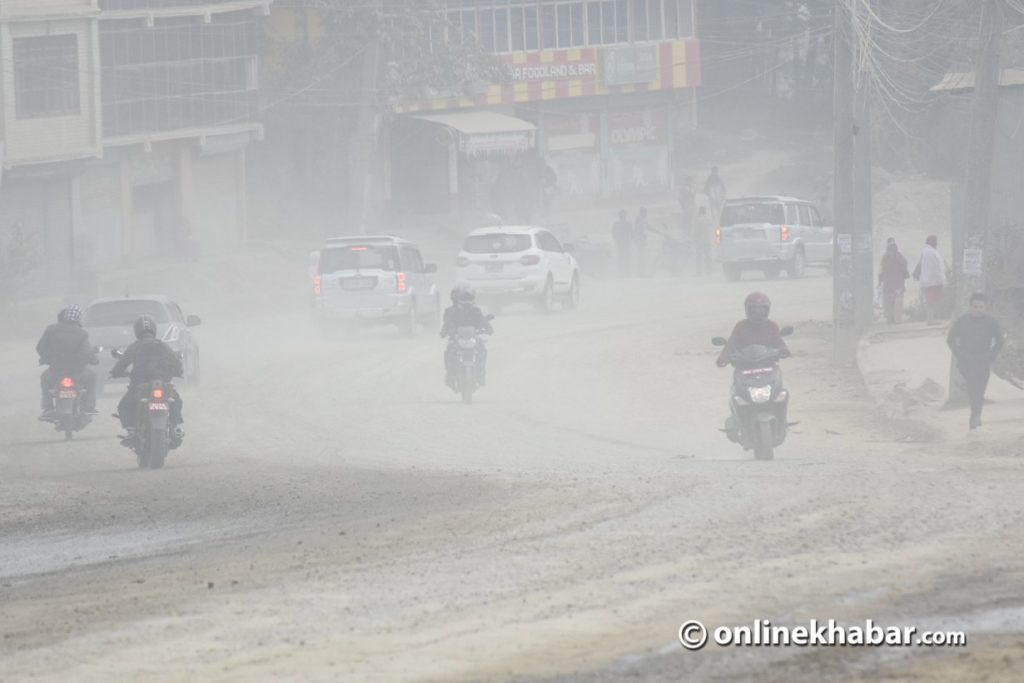
At another level, Tuladhar adds, the problem is not solved because the government has not been able to connect the pollution problems to health, environment and economy. “According to the World Bank, 7.5 per cent of welfare loss [in South Asia] is because of pollution. We should be able to understand its implications.”
Silver linings
“In 2002, after the strong local protests, the government shut down its [Himal] cement factory in Chobhar. It was probably the first and major incident in which the government had also realised that the factory was contributing to 50 per cent of the Kathmandu’s pollution level,” remembers Shrestha. Ban of Vikram tempos was also a step forward, Tuladhar says.
Likewise, in 2017, the DoE conducted and published a report about the brick kilns in the valley, acknowledging the problem. After 2015 earthquake, many kilns reconstructed use the same technology for lower emission of pollutants and greenhouse gases, he adds.
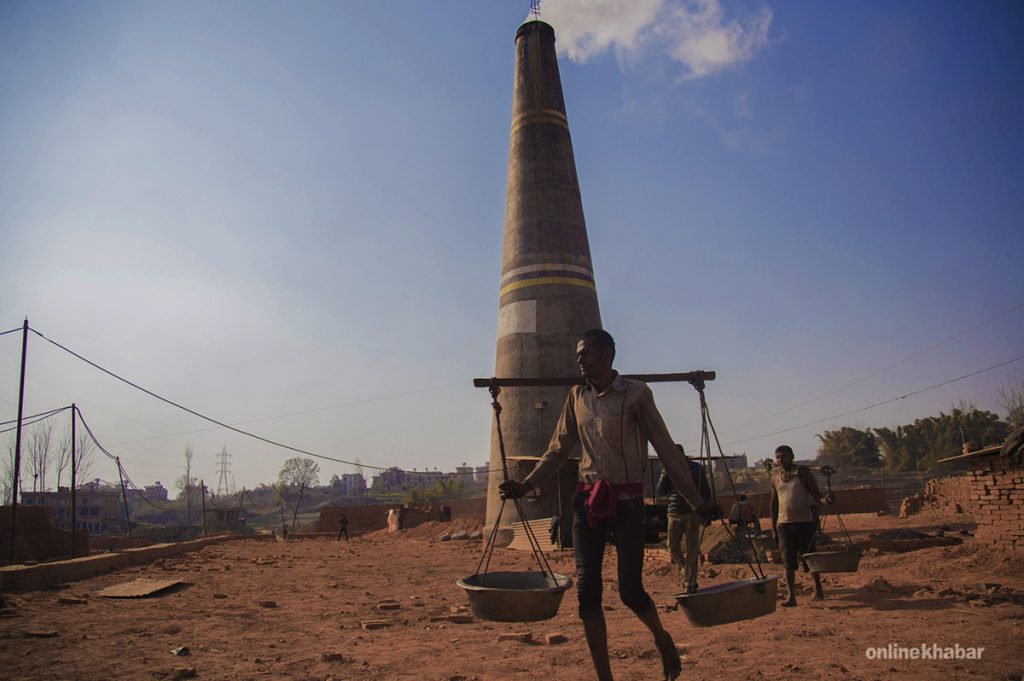
“All series of Maskmandu, a community-driven protest, were staged in accordance with article 30 of the new constitution of Nepal, 2015, for a healthy and clean environment. And, the priority given to cycle lanes by local authorities, post-local elections and adoption of federalism are some of the positive steps taken so far,” adds Shrestha.
Many settlements in Kathmandu valley were set up before the vehicles were even manufactured. And, a few decisions seem to have reflected upon it and realised it, says Shrestha. “Thamel was announced vehicle-free zone in 2017. There were plans to declare Ason the same too. And, recently, the Kirtipur Mayor Ramesh Maharjan has initiated that the area would be vehicle-free to safeguard the heritage there.”
“Post-federalism, we have hopes for progress in the environment as well as other sectors. The local authorities have the funding, power, and the flexibility to change policies locally to suit and empower the local progress. They have also become more accessible to the locals and initiators,” says Shrestha.
Meanwhile, Tuladhar says, “Both the Department of Environment and Ministry of Health and Population issued press releases and acknowledged the problem after January 5. It may not be much, but does hint progress.”



